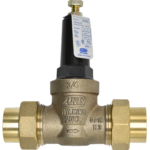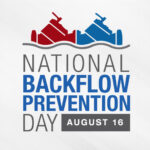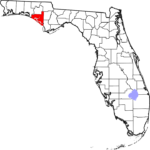Update on Desalination and Drought in the U.S. and the World
Samuel Taylor Coleridge, who wrote those words about water in The Rime of the Ancient Mariner — a poem describing a sea voyage in 1798 — probably never heard of desalination. No doubt over the centuries many sailors died of thirst in the middle of oceans full of vast amounts of water. Of course seawater — about 97 percent of the earth’s water — is unfit for drinking or irrigating crops unless processed to remove the salt.
IAPMO’s Official magazine reported in 2008 on the technology and progress of desalination. This article follows this important water issue, especially in light of increasing water needs in areas of the world.
Where in the World is Desal?
The short answer: in a lot of countries. Some use it a lot; others not so much.
According to the most recent statistics from the International Desalination Association, there are 18,426 desalination plants worldwide, in 150 countries. That translates into 22.9 billion gallons per day with more than 300 million people relying on desalinated water for some or all of their water needs. (The world’s current population is about 7.5 billion.) Another source says 21,000 desalination plants worldwide produce more than 3.5 billion gallons of potable water per day.
Most water for drinking and farming is obtained from traditional sources: rivers, lakes, and groundwater, with water reclamation and recycling. However, these sources are not always adequate, especially during droughts. The United Nations website states that approximately 1 percent of the world’s population is dependent on desalinated water to meet daily needs.
A few countries rely extensively on desalination; for others it supplements primary water supplies. Poseidon Water in San Diego states that desalination is most used in countries in the Middle East, the Mediterranean and the Caribbean, where traditional water supplies are limited due to arid climates or island locations. Saudi Arabia is the world leader, desalinating water to produce 70 percent of its drinking water.
Israel is also extremely impressive. This very dry country has amazingly progressed from water shortage to surplus. A 2017 article in NoCamels describes how that happened. Tomer Efrat, process engineering manager at Israel Desalination Enterprises Technologies said, “We used to have enough water from the Sea of Galilee and underground aquifers. But in the 1990s, we felt the water scarcity more and more.” Desalination, which provides 60 percent of Israel’s domestic water, plus drip irrigation, water recycling, and sustainable water conservation policies, have increased Israel’s water supply and shrunk its desert land. “Today, no one in Israel experiences water scarcity,” Efrat said.
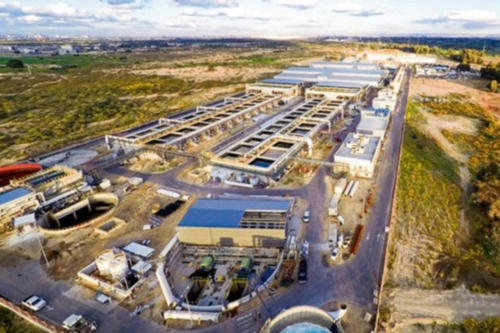
The Sorek Desalination Plant in Israel, built by IDE Technologies, helps Israel produce more water than it needs. Due to improved reverse osmosis technology, water produced by desalination costs a third of what it did in the 1990s.
India, the world’s second largest country with 1.3 billion people and a serious shortage of potable water, is looking to Israel for help with desalination, the Hindustan Times reported in May 2017. Leaders of Israel and India plan to meet to discuss Israel’s high-end technologies. India is considering building three new desalination projects on the western coast and southern tip of the country.
Also in the news, the ambitious Red Sea-Dead Sea Canal is a joint venture between Israel and Jordan to build a desalination plant on the Red Sea where they share a border. The water would be divided among Israelis, Jordanians, and Palestinians, and the brine piped to replenish the Dead Sea. “By 2020, these old foes will be drinking from the same tap,” Scientific American reported hopefully.
Australia, the driest inhabited continent on Earth, got drier during a long drought from 1997 to 2009. As a result, it built more desalination plants, with 30 now operating. Many of the plants are powered by renewable wind or wave farms, and some by solar.
Seawater is not the only source for desalination. According to Poseidon Water, almost 50 percent of desalination plants use brackish groundwater, which is too salty to drink without processing. It’s easier to desalinate brackish groundwater than seawater because it’s less salty. In the United States, desalination of brackish groundwater is increasing in Florida, Texas, and California in inland locations. Not far from IAPMO Headquarters, brackish water in the Chino Basin area is being treated at a desalination plant in Santa Ana that produces 14 million gallons a day of fresh water.
The Big Benefit
To state the obvious, desalination is a method of producing drinkable water that is not dependent on rainfall. This is important in a world that has plenty of seawater, but many arid countries, dwindling traditional water sources, long transports of imported fresh water, and prolonged droughts.
In another example, California Gov. Jerry Brown recently declared the end to a five-year drought, which had placed mandatory cuts in urban water use on all state residents. “This drought emergency is over, but the next drought could be around the corner,” he said.
The World Health Organization (WHO) estimates that almost one-fifth of the world’s population lives in areas where water is scarce. WHO predicts that “this situation is expected to worsen as competing needs for water intensify along with population growth, urbanization, climate change impacts, and increases in household and industrial uses.”
How Does Desalination Work?
Basically, there are thermal and reverse osmosis (RO) technologies. You can use heat to distill saltwater and turn it into steam, leaving the salt behind. Or you can use pressure to force saltwater through membranes to filter out salt and other large molecules, resulting in potable water and brine. The 2008 Official article gave a comprehensive description of the RO technology used at a desalination plant in Long Beach, California. A visual analogy of the size of filtration particles is if water molecules are tennis balls, then salt molecules are soccer balls and softballs, viruses are trucks, bacteria are buildings and protozoa are mountains.
Most desalination plants use reverse osmosis. While the technology is continually improving and becoming more efficient, this method requires lots of energy. To become potable, the parts per million (ppm) of salt must be reduced from 35,000 to 1,000 or lower. Water to irrigate crops may have 2,000 ppm.
There are five stages in reverse osmosis desalination. First, incoming seawater is pretreated to filter out algae and sea debris. Secondary pre-treatment removes more impurities. Then RO removes salt and other minerals by pushing the water with intense pressure through semi-permeable membranes, which are essentially microscopic strainers. A new plant in Carlsbad, California, uses more than 2,000 pressure vessels and 16,000 RO membranes. The resulting fresh water undergoes post-treatment to add some minerals and disinfect with chlorine. The water is then stored and distributed. The brine is discharged.
The Claude “Bud” Lewis Carlsbad Desalination plant in San Diego County opened in 2015 and is the largest in the nation, producing about 50 million gallons of desalinated water per day. That amount is impressive, but it could be argued is a “drop in the bucket.” The plant provides about 7 percent of San Diego County’s water, which relieves pressure on imported water supplies. It has won awards for design, implementation, and energy efficiency.
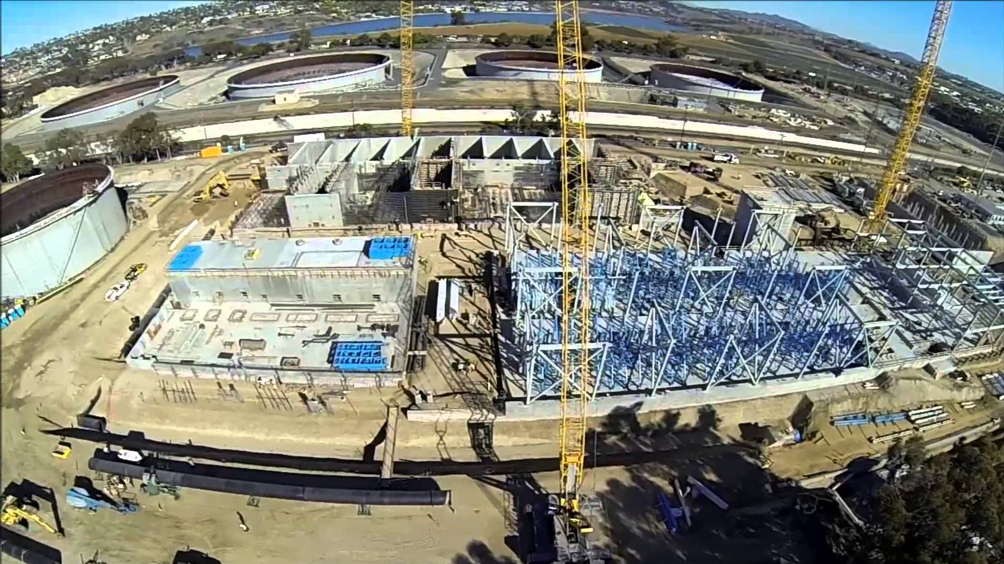
The award-winning Claude “Bud” Lewis Carlsbad Desalination Plant in San Diego County, California is the largest in the United States.
Downside #1: Cost
How does the cost of desalinated water compare to water from other sources? It’s higher, and depends on various factors such as cost of the plant and its technology, energy use, energy cost, and transportation costs from the source to the place of use.
Poseidon Water reported that over the last decade “dramatic technological improvements have made desalination much more cost-effective. … [T]he reverse osmosis membranes used today last longer, use significantly less energy, and cost much less than they did just a decade ago. Co-locating the plants with existing coastal power plants and using their intake and outfall facilities also results in large cost savings.”
Brian Bowcock, a director at Three Valleys Municipal Water District, said San Diego is paying about $2,200 per acre-foot for water from the Carlsbad desalination plant and $979 per acre-foot for water treated by the Metropolitan Water District (MWD). (Three Valleys is one of 26 water agencies in the MWD of Southern California, the largest distributor of treated drinking water in the United States.)
“We won’t invest a lot in desal in our area because it’s not cost efficient due to transportation costs from coast to inland,” Bowcock said. “Reclaimed water is getting bigger and water conservation is essential. MWD is always looking for sources and supplies, including desal, but it’s easier to reclaim water from residential wastewater than to desalinate ocean water.”
Downside #2: Environmental Impact
The environmental issues are about intake, output, and energy use. “Desalination, like other major industrial processes, has environmental impacts that must be understood and mitigated,” says the Pacific Institute, a “global water think tank” founded in 1987.
Sea life, such as plankton and fish eggs, can be killed when sucked in from the ocean to a desalination plant. Burying the intake pipes so biological matter is filtered out by sand reduces damage.
The highly saline brine, also containing chemicals used in the process, is discharged into the ocean, where it is diluted. If dumped near the shore, this salty sludge can “wreck havoc on marine ecosystems,” according to a scientist at the Scripps Institute of Oceanography. Obviously, steps must be taken to ensure the safe disposal of brine.
Desalination has been called an “electricity hog.” The Los Angeles Times reported in 2015 that “the California State Water Project is the single biggest user of electricity in the state because of the energy needed to move water from one place to another … but desalination, gallon for gallon, uses far more power.”
Though still a major user of fossil fuels, desalination’s energy efficiency is improving. The Carlsbad plant uses energy recovery devices to capture the hydraulic energy created by the high pressure reject stream of seawater produced during the RO processes. A proposed desal plant in Huntington Beach, California, has plans to use some solar and wind power.
These projects take a long time, beginning with the lengthy permitting process due in part to environmental regulations. The Carlsbad plant was originated in 1998 and not opened until 2015. It helped to have a purchase agreement with the San Diego County Water Authority and being located adjacent to the Encina Power Station. The next desalination plant to be constructed by Poseidon Water is in Huntington Beach. It originated in 2005 and is in the final phase of the permitting process 12 years later. It is expected to generate 50 million gallons per day and be operational by 2019.
The Future of Desalination
The use of desalinated water is increasing and is an important piece of the water shortage puzzle. But for most parts of the world, it’s a small part of the bigger picture. Other alternatives such as reclaimed water, conservation, and rainwater harvesting are essential.
A Los Angeles Times article addressed California’s water situation: “Desalination can provide some insurance when times get very bad. What it can’t do is start the lawn sprinklers again. It also can’t be used as an excuse for rampant development, heedless of whether there will be enough water in droughty times to serve everyone. Saving and reusing water are still our best bets. As a policy matter, it’s worth worrying that people will see the depths of the oceans as a great reason not to conserve and reclaim.”
Israel is an excellent example of combining desalination with water management. The Los Angeles Times said, “Desalination works as a major water source in Israel, not because it can provide enough water for 40-minute showers, but because Israelis already are very careful with their water consumption, which is about one-fifth that of the United States’ per capita.”
Those ancient mariners actually did distill some seawater for drinking. Today, huge modern vessels, including Navy ships and cruise ships, get their fresh water from storage tanks and on-board desalination equipment. Some work by evaporation/distillation, but increasingly use reverse osmosis.
So now there is water, water everywhere, and many drops to drink — if you have the proper technology and don’t waste your water.






 06 Jun 2018
06 Jun 2018
 Posted by BP Journal
Posted by BP Journal 







